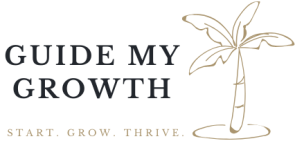Earlier this year, I created and delivered a 3-part training on financial sustainability for tech hubs in West Africa. Since then, I’ve had time to reflect on what made this experience so impactful for them and for me.
In my work with SMEs, one of the key questions I deal with is how to sustain the business. Meaning, having a business model that works. Once you figure that out, you’ll have found the key to building a business that lasts.
So, when I started developing the training, my focus was solidly on the issue of financial sustainability for tech hubs. More specifically, it was on helping these hubs adopt a mindset that positions them for long-term survival.
From funding requests to value propositions

Many of the hubs that joined the training depend heavily on grant funding to survive. It’s a common strategy for NGOs but also a risky one because traditional donor funding is shrinking. And the funding landscape itself is changing in ways that bring both challenges and opportunities.
- There is a growing realisation that development must be local-led
- We’re seeing a bigger focus on results, AKA a more business-like approach
- This means that organisations have to become more professional about how they present themselves and how they achieve and report results
Given the above, it is important to discuss how tech hubs can diversify funding beyond grants. One of my key messages was that hubs need a new way to frame themselves to highlight how they are creating value and driving social impact. This is, in fact, very similar to what every business must do:
- Understand market demand, meaning: identify customer pain points (whether B2C or B2B)
- Create a product or service that taps into what makes customers buy
- Make sure you know how to differentiate yourself from your competitors and
- Create a value proposition that combines the above using messaging that your customers recognise.
During the training, we therefore spent time addressing questions like:
- What is your value proposition for potential funders and partners?
- Who are your real “customers”?
- What do you offer that someone would be willing to pay for?
These are business questions and I asked them intentionally. For the very simple reason that if tech hubs want to last for years, they will need to think like businesses.
Related posts:
From “What do we lack?” to “What do we already have?”

For me, one of the most important moments during the training was when I asked the hubs to map their resource gaps and then flipped the question. (Resource gaps are things that are missing, like expertise, funding, office space etc.)
Instead of focusing on what was missing, we looked at:
- What do you already have that can be monetised?
- What services do you currently provide for free that could generate revenue?
- What partnerships are sitting right in front of you that have not yet been activated?
Basically, mapping resource gaps to monetise tech hub assets. This shifts the conversation from scarcity to strategy and starts opening up new possibilities for income generation.
From an NGO mindset to a business mindset

My team at my NGO in Liberia will tell you that “changing the NGO-mindset” is a phrase that I use a lot.
During the training, I challenged the hubs to stop thinking like an NGO and start thinking like a business that sells social impact. For these tech hubs, shifting from NGO to business mindset means that changing your mindset from someone who waits for funding opportunities to someone who looks at what customers are willing to pay for.
In the case of these tech hubs, “customers” are usually potential funders and partners. This is because the people who benefit from the services may not have enough money to pay for these services. But there is usually still a way to generate at least some income to cover part of the operational costs.
(I know that the above is "taboo" for people who believe that NGOs should only offer free services. I do not believe that NGOs should only offer free services. I believe in dignity and equality and I strongly believe that these two things cannot be sustained when there is an ongoing power imbalance in a relationship. Such as, indefinitely providing charity or handouts. More importantly, even "free" services are never free: there is always someone who pays - the funder.)
Using this perspective, we discussed tools like the Business Model Canvas, stakeholder mapping and the Value Proposition Canvas. Specifically, we looked at how these tools can help tech hubs get clarity about what they are offering (AKA “selling”) and how to use that information to determine which funders to align with. In other words, what is your value proposition for potential funders? Though I talked about using the business model canvas etc. in non-profits, all of these tools are also used in business.
Without strategy, impact cannot scale

In local economies, tech hubs are catalysts, in ways that are similar to small and medium enterprises.
Tech hubs create jobs, build pipelines of tech talent, help local entrepreneurs gain digital skills and boost innovation even though infrastructure might be missing.
These are great activities, but their impact can only scale if their operations are sustainable.
Financial sustainability is about knowing your value, building partnerships that are based on value alignment (and working methods!) and designing a long-term growth strategy that allows you to grow without compromising your identity.
This is true for tech hubs and it also applies to other types NGOs and SMEs.
If your business operations are not sustainable, your business cannot grow. When this happens, many businesses start looking for funding options, in the same way that NGOs double their efforts to look for funders. But how many funders - whether an international donor, bank or investor - are willing to support a business or organisation that is struggling if there is no clear plan to achieve financial sustainability?
This is why it is so important to develop a growth strategy that has a solid foundation. I call this organic business growth. What I shared during the training comes from my own experiences building up the financial sustainability of an NGO and school in Liberia. It is also based on seeing my parents build up a business.
Conclusion
SMEs offer many lessons for tech hubs and other NGOs. I am convinced that any business or organisation that succeeds in laying this solid foundation - even though it does not guarantee them that they will survive for 200+ years - will have the best possible chance of building something that lasts for generations.
* The original version of this article was published on SoVenture.nl




